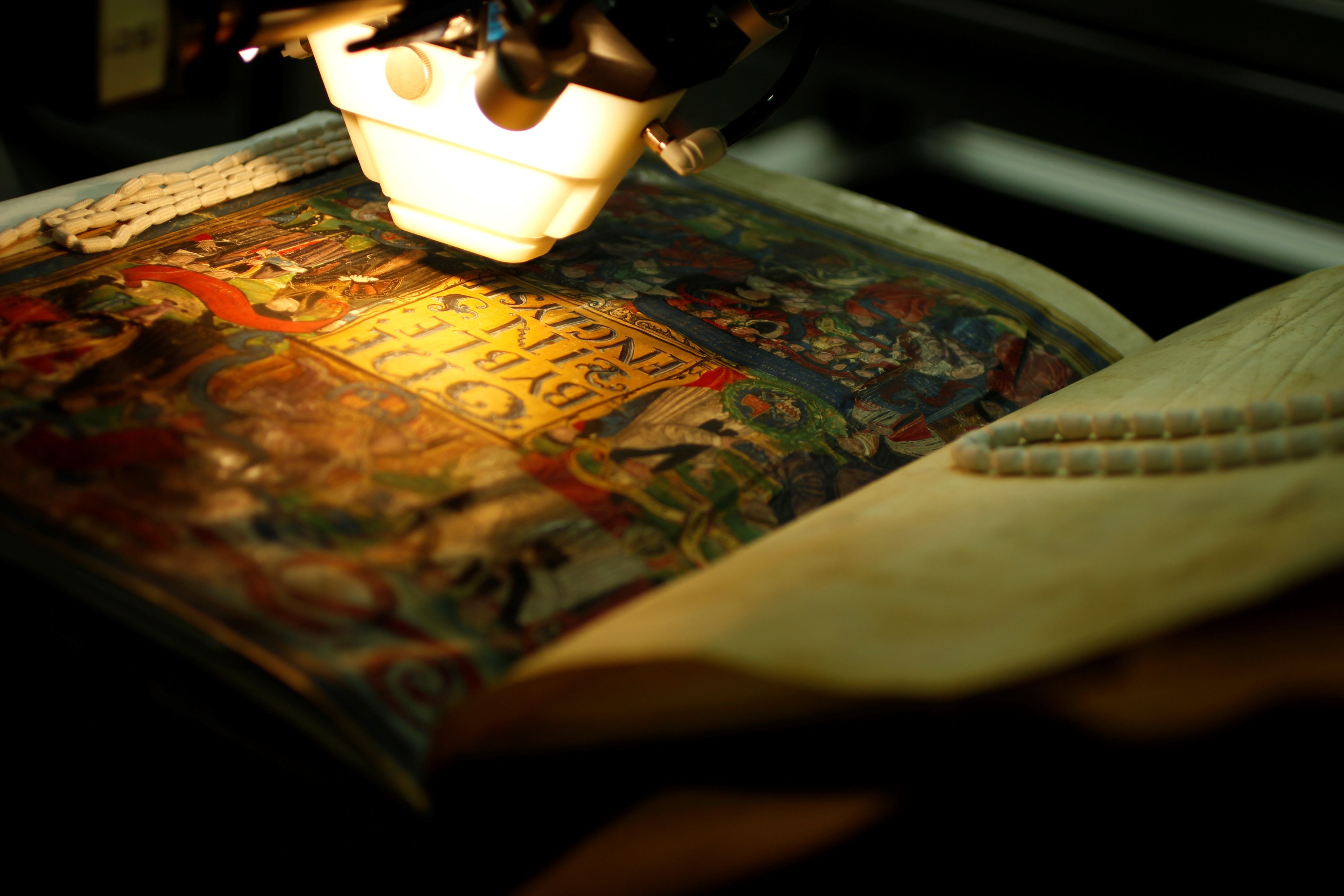Cambridge University Library receives major investment for heritage science research

Cambridge University Library has been awarded two large grants from the Arts and Humanities Research Council (AHRC) to fund heritage science research.
The two projects, "Small performances" and Hidden in Plain Sight, will allow us to step back in time to look at the creation of one of the world’s most popular and enduring typefaces (the Baskerville font) and the secrets contained within sacred texts of some of the world’s major religions.
“These two projects perfectly encapsulate the research-active environment our 21st century University Library embraces and encourages, using state-of-the-art equipment and involving technicians, experts and researchers from not only the UL, but across the University and the wider UK – all building on investment from the AHRC’s previous CapCo funding.”
Dr Jessica Gardner, University Librarian and Director of Library Services

"Small performances": investigating the typographic punches of John Baskerville (1707-75) through heritage science and practice-based research
The Baskerville typeface is familiar to billions of readers and users of standard computer software across the world. However, the story behind its creation by John Baskerville (1707-75) is much less widely known. This is in spite of the fact that he was England's foremost printer, and what he called his "small performances" in typeface design "went forth to astonish all librarians of Europe". From a broader perspective, printing is recognised as the invention of the millennium, and a democratiser of knowledge - and yet it remains ubiquitous but invisible, and how it happens is not generally known.
This interdisciplinary project seeks to make a substantial contribution to the history of printing technology, while ensuring this is a living process that will continue into the future. At its heart is the exceptional collection of typographic punches designed, cut, and used at Baskerville's workshop in Birmingham, which are owned by Cambridge University Press & Assessment and now held at Cambridge University Library. Baskerville served as University Printer. Individually engraved in steel, punches were the first of three stages in the manufacturing of metal type - one that posed challenges in both materials and design - and therefore they preserve otherwise inaccessible information that can be unlocked through scientific study.
The project will materialise as a new and essential chapter in the history of world technology, and as a novel form of research engagement among academics, practitioners, and laypeople, made visible through 3D models, digital editions, new typeface designs, and practical and creative workshops. Led by Professor Marcos Martinón Torres, Pitt-Rivers Professor of Archaeological Science in the Department of Archaeology at Cambridge and in collaboration with Professor Caroline Archer, Professor of Typography, and Dr Ann-Marie Carey, Research Fellow in the School of Jewellery, both at Birmingham City University, this work will transform our understanding of the collection of Baskerville punches and benefit current industrial and craft applications, as well as educational projects.
Cambridge University Libraries staff involved in the project include, Maciej Pawlikowski (Co-Investigator) and Liam Sims (Research Assistant).

Micro RTI visualisation of the Baskerville punch letter "g"
Micro RTI visualisation of the Baskerville punch letter "g"

Hidden in Plain Sight: Historical and Scientific Analysis of Premodern Sacred Books
At the heart of most religions are their sacred texts. Across the ages, sacred books have been venerated, but also heavily used, and even modified to accommodate new religious cultures and sensitivities. Buddhist sutras were inserted into sculptures, while Qur'anic verses were sealed into West-African amulets, never to be opened. Bibles have been treasured and displayed, but also mutilated, with texts and images blotted or knifed by reformers or members of opposing religions. Little is known about the transformations of premodern sacred books, which have often gone unnoticed by scholars and wider audiences alike.
The project will help address this lack of knowledge by deploying a range of innovative technologies, rarely used within historical studies. Complex technical imaging, 3D microscopy, Micro-CT scanning, DNA analysis and a range of spectroscopic methods will reveal hitherto unnoticed traces of the way sacred books and talismans were used, modified, and venerated.

The project team has demonstrated the value of using such technologies in the study of ancient books when analysing Henry VIII's presentation copy of the Great Bible. Using a microscope and raking light they were able to reveal, for example, how Thomas Cromwell had his portrait pasted onto the Bible's title page.
The project team has demonstrated the value of using such technologies in the study of ancient books when analysing Henry VIII's presentation copy of the Great Bible. Using a microscope and raking light they were able to reveal, for example, how Thomas Cromwell had his portrait pasted onto the Bible's title page.
The project will further these discoveries, bringing together historians and scientists to examine premodern sacred books and objects, while developing methodologies and protocols for such collaborative work. We will explore the transformation of sacred books, while advancing the use of scientific research methods within historical analysis.
Led by Dr Eyal Poleg of the School of History at Queen Mary University of London, with Dr Suzanne Paul, the CUL Keeper of Rare Books and Manuscripts as Co-Investigator, the project involves collaboration with the Cambridge Museum of Archaeology and Anthropology, the National Library of Wales and other leading libraries and will analyse both renowned and little-known books and objects.
Keep up-to-date with research projects and activities across Cambridge University Libraries by signing up to the Cambridge University Library Research Institute (ULRI) mailing list.
The text in this work is licensed under a Creative Commons Attribution-NonCommercial-ShareAlike 4.0 International License
Collection items featured:
Headline image: Great Bible, Paris/London 1538/9, St John's College Cambridge, undergoing XRF analysis at the Hamilton Kerr Institute, University of Cambridge. By permission of the Master and Fellows of St John’s College, Cambridge.
Baskerville punches housed at Cambridge University Library
Photography featured:
Photography of punches by Maciej Pawlikowski
Video of RTI visualisation by Blazej Mikula
